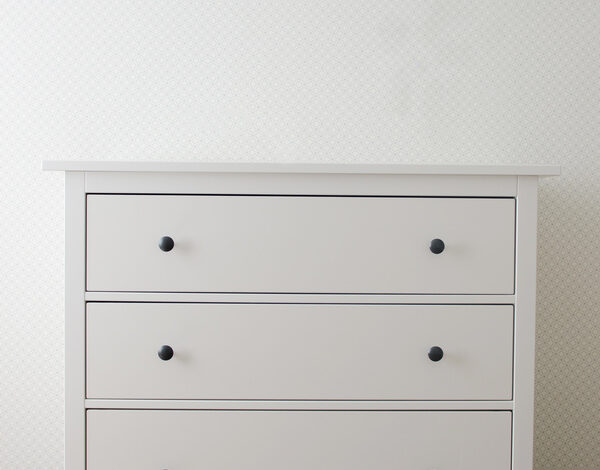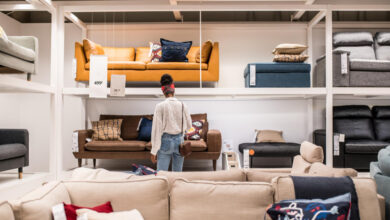The IKEA Phenomenon: A Deep Dive into a Global Retail Giant

IKEA Phenomenon: A Deep Dive into a Global Retail Giant
For millions of people around the world, the name IKEA evokes a specific sensory experience: the iconic blue and yellow facade, the tantalizing smell of Swedish meatballs, and the challenge of navigating a vast, winding showroom. Founded in Sweden in 1943, IKEA has grown from a small mail-order company into a global retail giant, forever changing the way we think about home furnishings. It has become a cultural phenomenon, a brand synonymous with affordable design, functional simplicity, and the satisfying, if sometimes frustrating, ritual of assembling furniture with a tiny Allen wrench. This article will explore the key pillars of IKEA’s success, from its visionary business model to its cultural impact and its forward-thinking vision for the future.
1. The Visionary Founder and the Birth of a Concept
The story of IKEA is inseparable from its founder, Ingvar Kamprad. As a young man, Kamprad had an early entrepreneurial spirit, selling matches, seeds, and pencils from his bicycle in the small village of Agunnaryd. In 1943, at the age of 17, he founded IKEA, an acronym for his initials (IK), the farm where he grew up (Elmtaryd), and his hometown (Agunnaryd). Initially, the company sold a variety of goods, but by 1948, Kamprad shifted his focus to furniture. The real revolution, however, came in the 1950s when he encountered a problem: the furniture was too large and expensive to ship. The solution was a stroke of genius. A colleague suggested removing the legs from a table to fit it into a car, and the “flat-pack” concept was born. This innovation would become the cornerstone of IKEA’s business model, significantly reducing costs and revolutionizing the retail industry.
2. The IKEA Business Model: Democratizing Design
IKEA’s enduring success is built on a business model that is as brilliant as it is simple. The core philosophy, which Kamprad dubbed “Democratic Design,” is the belief that beautiful, functional, and high-quality home furnishings should be affordable to everyone. This is achieved through a five-pronged approach:
- Form: A focus on minimalist, Scandinavian design that is both stylish and timeless.
- Function: Products are designed with practicality and smart solutions in mind.
- Quality: Despite the low price, products are made to be durable for everyday use.
- Sustainability: A growing commitment to using responsibly sourced and recycled materials.
- Low Price: This is the result of their relentless focus on efficiency across the entire value chain.
The flat-pack system is central to this model. By allowing customers to transport and assemble the furniture themselves, IKEA drastically reduces transportation and storage costs. This efficiency is a core part of its cost leadership strategy, enabling the company to pass on significant savings to the consumer and make stylish living an attainable reality for millions.
3. The IKEA Store Experience: A Walk Through the Labyrinth
Stepping into an IKEA store is not just a shopping trip; it’s a carefully crafted journey. The store layout is a masterpiece of retail psychology, guiding customers along a specific, one-way path. The experience is divided into three main sections:
- The Showroom: This is the inspirational heart of the store. Customers walk through dozens of fully decorated rooms—from kitchens and living rooms to bedrooms and home offices—that showcase how IKEA products can be used in a real-world setting. This visual merchandising strategy inspires ideas and encourages customers to imagine the products in their own homes.
- The Marketplace: After the showroom, customers enter the marketplace, a sprawling, warehouse-style area filled with smaller items. Here, you’ll find everything from kitchen utensils and textiles to lighting and picture frames. This section is designed to encourage impulse purchases and fill the cart with practical, affordable goods.
- The Warehouse: This is the final stop before checkout. Customers use a shopping list to locate the specific aisles and bin numbers for the flat-packed furniture they selected in the showroom. The self-service warehouse reinforces the company’s cost-saving model and provides a satisfying, “hands-on” conclusion to the shopping experience.
4. A Global Presence and Local Adaptation
IKEA’s iconic blue and yellow stores can be found in over 60 countries across the globe. Despite its standardized business model, the company has masterfully adapted to local tastes and customs. For example, in China, stores are equipped with larger kitchens to accommodate traditional cooking styles, while in the United States, kitchen appliances are adjusted to standard American sizes. The company also pays close attention to local living habits, offering smaller furniture solutions for dense urban centers and more space-conscious designs where required. This ability to maintain its brand identity while catering to regional differences has been crucial to its successful international expansion.
5. Sustainability and Social Responsibility
In recent years, IKEA has made a significant and public commitment to sustainability. The company aims to become a “climate positive” business by a set year, meaning it will reduce more greenhouse gas emissions than it emits across its entire value chain. This ambitious goal is supported by a number of initiatives:
- Sustainable Materials: A strong focus on using recycled materials, particularly plastics, and ensuring that all wood is sourced from more sustainable forests.
- Renewable Energy: Investing heavily in solar and wind farms to power its stores and operations.
- IKEA Foundation: The company’s philanthropic arm supports children and communities in developing countries, focusing on issues like health, education, and clean energy. This commitment to social good adds a layer of purpose to the brand beyond its commercial success.
6. The Cultural Impact of IKEA
IKEA’s influence extends far beyond the retail sector. The brand has had a profound impact on modern home decor and even on our collective psyche. The “IKEA effect”, a term coined by behavioral scientists, describes the psychological phenomenon where people place a higher value on products they have partially created or assembled themselves. The brand’s simple, functional aesthetic has also become synonymous with a modern, democratic lifestyle, proving that good design doesn’t have to be a luxury. The names of its products, from the Billy bookcase to the Malm bed, have become recognizable household names and cultural touchstones.
7. The Future of IKEA: Digital Transformation and Urban Living
Looking ahead, IKEA is proactively evolving to meet the challenges of a rapidly changing world. The company is heavily investing in digital transformation, aiming to create a seamless e-commerce experience that complements its traditional brick-and-mortar stores. This includes a more user-friendly website, improved delivery services, and digital tools for planning and design. Additionally, in response to growing urbanization, IKEA is experimenting with new, smaller city-center store formats. These stores, which lack the massive warehouses of their suburban counterparts, are designed for pedestrians and public transport users, offering a curated selection of popular items and a space to plan larger purchases for home delivery.
Conclusion
IKEA’s journey is a testament to the power of a clear vision, relentless innovation, and a deep understanding of the consumer. It is a company that didn’t just sell furniture; it sold a lifestyle, a philosophy, and the gratifying feeling of building something yourself. From the initial flat-pack concept to its current focus on sustainability and digital retail, IKEA has consistently adapted and thrived. It has become more than just a store; it is a global icon that has permanently reshaped the landscape of home furnishing, proving that great design can, and should, be for everyone.






